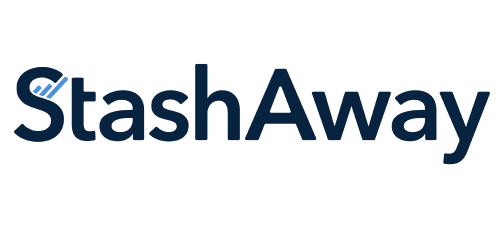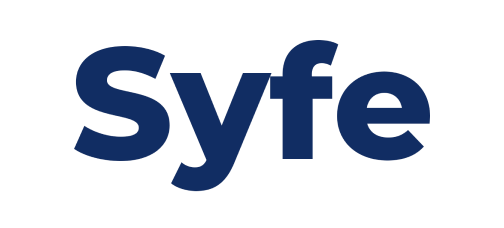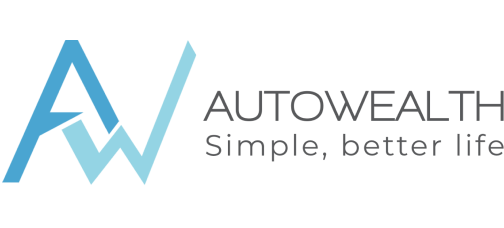Stashaway Review — Is This Popular Robo Advisor Good for Beginner Investors?

You might have heard of a little robo advisor called Stashaway. OK, it’s not so little — this startup has been around since 2016 and has dominated the robo advisor scene ever since.
With no minimum investment to start, affordable fees, and a beautiful, baby-bottom-smooth app, it’s no wonder Stashaway has taken newbie investors by storm. You can finally grow your money in an aesthetically-pleasing way.
That said, the world of robo advisors is awfully competitive these days. Let’s take a closer look at Stashaway and see how it fares amid the competition.
Disclaimer: Not a certified financial advice-giver. Just a lowly writer trying to beat inflation.
Online Promo
Stashaway
Online Promo:
Enjoy 50% off on fees for any assets under management for 6 months!
Valid until 30 Jun 2022
More Details
Key Features
Earn projected rate of 1.9% p.a. with your cash with Stashaway Simple.
Start saving for your retirement by investing with your SRS funds.
One transparent management fee, from as low as 0.2% p.a.
No account setup fee.
Unlimited, free transfers and withdrawals.
Rebalancing, transaction, and re-optimisation costs are included.
Fully accessible on 4.6 star rated app on Apple App store and Google Play.
What are Stashaway’s fees?
Like most robo advisors, Stashaway charges a percentage of the total amount you invest (rather than a fee per transaction).
Here’s an overview of Stashaway fees.
Total investment (SGD) | Annual fee |
|---|---|
First $25,000 | 0.8% |
>$25,000, up to $50,000 | 0.7% |
>$50,000, up to $100,000 | 0.6% |
>$100,000, up to $250,000 | 0.5% |
>$250,000, up to $500,000 | 0.4% |
>$500,000, up to $1,000,000 | 0.3% |
>$1,000,000 | 0.2% |
For beginner investors, you’d be looking at 0.8% annually. This is the management fee and excludes ETF fees and forex transaction fees if any:
Now, 0.8% is reasonable to us but not the absolute cheapest, especially when there are competitors offering fees like 0.5% or even 0%.
However, Stashaway is one of the few robos with no barriers to entry/exit, so it’s a good one if you want to dip your toes into investing.. It’s easy to get started, there’s no minimum investment or balance, and you can withdraw the money anytime for free.
How does Stashaway work?
Stashaway invests your money in Exchange Traded Funds, or ETFs. They’re kind of like those assortment packs of candy you see at the supermarket. Through diversification, these “fun packs” reduce the risk buying the wrong candy flavour and having to eat the entire bag of it.
The normal Stashaway contains ETFs from all over the world, covering every sector you can possibly imagine. These include generic ones that track entire markets, gold, bonds, and so on. A handful of examples from the full list:
iShares Core S&P 500 ETF
Vanguard FTSE Europe ETF
iShares MSCI All Country Asia ex Japan
iShares International Treasury Bond ETF
Vanguard Real Estate ETF
SPDR Gold Shares
KraneShares CSI China Internet ETF
Before you invest, you’ll need to specify your risk tolerance. For example, if your risk level is 20% (considered “balanced” or “normal”), that means you are willing to lose up to $20 out of every $100 you invest.
From there, Stashaway buys the ETFs according to your risk level. Low risk = more bonds, less stocks. High risk = less bonds, more stocks.
But your investments don’t remain stagnant in the long term. To reduce the risk of losses, Stashaway uses fancy algorithms to monitor economic trends and automatically re-allocate your investments to minimise risk.
What is Stashaway Income Portfolio?
Stashaway Income Portfolio is an alternative to the “regular” Stashaway. Unlike the hyper-global Stashaway ETFs, the Stashaway Income Portfolio focuses on Singapore only. You might even recognise its 6 component ETFs:
ABF Singapore Bond Index Fund
Nikko AM SGD Investment Grade Corporate Bond
iShares Barclays USD Asia High Yield Bond Index ETF
NikkoAM Straits Times Index ETF
NikkoAM-StraitsTrading Asia ex Japan REIT ETF
Lion-Phillip S-REIT ETF
The Stashaway Income Portfolio is considered low risk (12% on the Risk Index) and is optimised for dividends/income rather than growth. It’s good for complementing your regular global Stashaway portfolio, especially a higher-risk one.
On the other hand, it has a high minimum investment of $10,000 — so it’ll be out of reach until you have this much to invest. The same Stashaway fees apply too, which is steep considering going DIY can cost a lot less.
Side note: See our guide to buying ETFs in Singapore if you’re interested in DIYing. But this is more for hands-off investing — it doesn’t make sense to go in a fiddle with your investment allocations.
What is Stashaway Simple?
Finally, there’s Stashaway Simple, which isn’t exactly an investment — more of a “cash management” account with 0% fees instead of the usual 0.8%.
Instead of putting your cash in ETFs like the above, Stashaway puts it in the following low-risk funds:
LionGlobal SGD Money Market Fund
LionGlobal SGD Enhanced Liquidity Fund
The projected returns of 1.4% p.a. are not guaranteed. That said, it’s very low risk, at just 1.7% on the Stashaway Risk Index.
Does that mean you should move your entire savings account over to Stashaway Simple? Probably not, but if you have some funds you want to keep liquid, such as your wedding fund, you might find it useful to park it here, out of reach.
Is Stashaway safe?
Stashaway has been around for a few years, but it doesn’t have the same credentials as, say, DBS. And robo advisors have been known to shut down — Smartly, for instance, closed in 2020.
Like all robo advisors, Stashaway is MAS-licensed and likes to flaunt it. However, MAS is actually more lenient on robo advisors than on other financial institutions, so to us it doesn’t mean that much.
For what it’s worth, Stashaway declares that your deposits go into a DBS trust account, while your investments are held in a Saxo custodian account. We infer that, should Stashaway get into financial trouble, they won’t be able to touch your assets because they’re held in different entities.
If you’re worried about putting your life savings in an “unknown” startup, you might want to consider a bank-based robo advisor like DBS digiPortfolio. Compare robo advisors on MoneySmart.
Syfe vs Stashaway — which is better?
Like Stashaway, Syfe is a robo advisor with no minimum investment, so it’s very popular with newbies. For those investing small amounts, Syfe is cheaper:
Total investment (SGD) | Stashaway | Syfe |
First $25,000 | 0.8% | 0.65% (up to $20,000) / 0.5% (above $20,000) |
> $25,000 to $50,000 | 0.7% | 0.5% |
>$50,000 to $100,000 | 0.6% | 0.5% |
>$100,000 to $250,000 | 0.5% | 0.4% |
>$250,000 to $500,000 | 0.4% | 0.4% |
>$500,000 to $1million | 0.3% | >0.4% |
It’s a little more complicated to use Syfe because you need to understand their portfolios and decide on which one is better.
For investing globally, we prefer Stashaway because their mixed-asset portfolios are safer. Syfe’s equivalent is a 100% equity portfolio which is much higher risk and better for those who already know their stuff.
However, only Syfe has an all-REIT portfolio, which is understandably popular given Singaporeans’ obsession with real estate. So if you’re super keen on REITs, Syfe is a better choice.
Free Access to Wealth Advisors
Syfe
More Details
Key Features
4 portfolio options: Core, REIT+, Cash+ and Select
REIT+ holds Singapore's 20 largest REITs in one portfolio: Ascendas REIT, Mapletree Commercial Trust and more
Syfe Core portfolios hold stocks, bonds, and gold and provide diversified exposure to US and China
Select from themes such as ESG & Clean Energy, Disruptive Technology, Healthcare Innovation, China Growth or Global Income
Cash+ is a cash management portfolio with projected returns of 1.5% p.a.
No minimum investment, no lock-in period, withdraw anytime.
Licensed by MAS under Capital Market Services for retail fund management.
Autowealth vs Stashaway — which is better?
Autowealth is one of the OG robo advisors that came on the scene around the same time as Stashaway. So both robos have a decent track record and appear to follow similar investing methods.
Unlike Stashaway and Syfe, which have no minimum investments, Autowealth requires at least $3,000 to start investing. It’s not as suitable as an entry-level robo advisor.
Autowealth charges a flat fee of 0.5% + US$18 no matter how much you invest. This means it’s cheaper to invest with Stashaway at low amounts, but Autowealth becomes cheaper at around the $10,000 mark.
Autowealth’s main selling point is that you get a dedicated wealth manager whom you can WhatsApp anytime. So it really all comes down to personal preferences. If you’re all right with a user-friendly app and don’t need human assistance, Stashaway is easier to use.
AutoWealth
More Details
Key Features
AutoWealth is a regional robo-advisor, based in Singapore, that automates investing, allowing you to skip costly middlemen & get good returns at a low fee.
AutoWealth takes an index tracking investment approach. This approach has been found to consistently outperformed 80-90% of actively managed unit trusts around the world over a 5, 10, 15 year period, generating substantially higher returns for investors.
With our innovations, our fees are only 0.5% of your assets & US$18 (platform fees) per annum, 1/4 that of traditional financial services.
A dedicated wealth manager assigned to you. Skip the general email or hotline. Advice is always one personal WhatsApp away.
Your assets are held in an individually segregated custody account that legally belongs to you. This is in sharp contrast with the co-mingled custodian account setup used by many financial institutions.
Endowus vs StashAway — which is better?
While StashAway has no minimum investment requirements, you need at least $1,000 to start an account with Endowus. Here’s a look at the fees in comparison.
Total investment (SGD) | Stashaway | Endowus |
|---|---|---|
First $25,000 | 0.8% | 0.6% |
>$25,000, up to $50,000 | 0.7% | 0.6% |
>$50,000, up to $100,000 | 0.6% | 0.6% |
>$100,000, up to $200,000 | 0.5% | 0.6% |
>$200,000, up to $250,000 | 0.5% | 0.5% |
>$250,000, up to $500,000 | 0.4% | 0.5% |
>$500,000, up to $1,000,000 | 0.3% | 0.5% |
>$1,000,000 | 0.2% | 0.35% |
Endowus charges 0.6% on everything up to $200,000, which is lower than Stashaway for the most part.
But there is a huge difference in how they invest. Stashaway invests in (hands-off) ETFs, while Endowus invests in (professionally managed) funds or unit trusts. The underlying fees could be very different depending on your actual portfolio.
Now, we could argue until the cows come home about whether it’s better to invest in ETFs or unit trusts, but we won’t. Both have their merits and drawbacks, so it’s really up to you, the investor, to choose what you’re comfortable with.
Online Promo
Invest with CPF & SRS Funds
Endowus
Online Promo:
【Exclusively for MoneySmart Customers】
Invest ≥S$1,000 and get S$20 in Access Fee credit (equivalent to S$10,000 advised free, assuming Access fee of 0.40%)
Valid until 31 Dec 2022
More Details
Key Features
Invest your CPF, SRS, and cash savings better, all on the Endowus platform, at the lowest cost possible.
No hidden fees, no sales charges and 100% trailer fee rebates.
Endowus has one all in, transparent access fee, which includes advice, investment, rebalancing, transfers, and brokerage, at a fraction of the industry average.
Endowus work with asset managers to access their lowest fees possible and rebate 100% of any sales commissions and trailer fees.
Through partnerships with UOB and UOB Kay Hian, you can set up your Endowus account and CPF investment account completely online in under 10 minutes.
Conclusion: Is Stashaway good for beginners?
Personally, I like Stashaway a lot because it does make one form of investing very cheap and simple.
But, I would not recommend it for total investing beginners, because Stashaway is basically playing in a relatively advanced space: It takes your money and invests it globally, especially in the US. Doing this comes with its own risks, and you should know them before going in.
To know if you’re ready to use Stashaway (or any other robo advisor), you should ideally answer Yes to most of these questions:
Do you already own some low-risk beginner assets e.g. Singapore Savings Bonds, regular savings plans?
Have you explored the investment options available domestically, i.e. on SGX?
Are you comfortable and keen to invest in global bonds and stocks?
Do you understand the risks and costs of investing in the US, e.g. taxes for dividends and bond payouts?
Are you ready for a long-term passive investment, where you have to basically ignore your investment for a while?
Are you OK with having not much control over the exact details of your portfolio?
(If you have answered Yes to most or all of these, you’re actually probably not as much of a “beginner” as you think.)
In conclusion, I would recommend Stashaway to at least “high beginner” investors — i.e., those who may not have had a whole lot of practical experience, but have at least enough financial understanding to really know what you’re getting into.
How to sign up for Stashaway
You can sign up for Stashaway through MoneySmart for a 50% discount off the first 6 months. Signing up is a breeze with SingPass MyInfo for verification.
Online Promo
Stashaway
Online Promo:
Enjoy 50% off on fees for any assets under management for 6 months!
Valid until 30 Jun 2022
More Details
Key Features
Earn projected rate of 1.9% p.a. with your cash with Stashaway Simple.
Start saving for your retirement by investing with your SRS funds.
One transparent management fee, from as low as 0.2% p.a.
No account setup fee.
Unlimited, free transfers and withdrawals.
Rebalancing, transaction, and re-optimisation costs are included.
Fully accessible on 4.6 star rated app on Apple App store and Google Play.
Next, download the app and play with its features to set up your first portfolio. You can then start seeding the investment via either cash or your SRS funds. For cash, no CDP account is needed — just transfer via PayNow.
You can change the portfolios, open or close them, and withdraw anytime.
Know someone who’s considering Stashaway? Share this article with them.
Visit MoneySmart’s curated list of Best Singapore Robo Advisors 2020 and start investing today
The post Stashaway Review — Is This Popular Robo Advisor Good for Beginner Investors? appeared first on the MoneySmart blog.
MoneySmart.sg helps you maximize your money. Like us on Facebook to keep up to date with our latest news and articles.
Compare and shop for the best deals on Loans, Insurance and Credit Cards on our site now!
The post Stashaway Review — Is This Popular Robo Advisor Good for Beginner Investors? appeared first on MoneySmart.sg.
Original article: Stashaway Review — Is This Popular Robo Advisor Good for Beginner Investors?.
© 2009-2018 Catapult Ventures Pte Ltd. All rights reserved.

 Yahoo Finance
Yahoo Finance 



